
To many Mopar fans, the 1969 Dodge Charger Daytona and 1970 Plymouth Superbird “winged warriors” are the true Holy Grail of Mopars. Dodge built 503 Daytonas back in 1969; just a hair over the 500 units required to allow them into NASCAR competition. While many registries and databases exist, no one really knows exactly how many of those 503 originals are left.
Many clones and replicas run the street today but there will always only be 503 of those true blood Daytonas. Being as so few were made, tracking them over the years is fairly easy and numerous wing nuts have databases and registries set-up for them; some going as far back as when they were new! That being said, quite a few of these cars have a very interesting history and stories to tell. A particular 1969 Daytona owned by Richard and Katrina Fleener from Murfreesboro, Tennessee is one of those that has a deep history; one that goes across the water all the way to Germany!

Their Daytona began life as a 1969 Charger R/T at the Hamtramck Main plant on May 29th, 1969. From there, it then went to Creative Industries for its Daytona conversion before being shipped to Bill Breck Dodge in Colorado Springs, Colorado on August 26th, 1969. It was the 140th Daytona shipped from Creative Industries. The car was painted in T7 Dark Bronze Metallic paint with matching tan interior, a white wing/stripe and powered by a 440 Magnum and 4-speed manual transmission. Options included the A01 Light Group, A33 Track Pak, power brakes, console, tinted windshield, undercoating, Tic Toc Tach, Music Master AM radio, power steering, 14” road wheels and redline tires; bringing the final price to $4,752.45.
The original owner was a US Army soldier and evidence strongly suggests that it had a rough and serious drag racing life. When the soldier was shipped off to the Nuremberg Army Base in Germany in 1972, the Daytona was loaded up and made the trip to Europe with him. By this point, the Daytona had a modified transmission and traction bars among other modifications to better equip it for drag racing. Around 1973, he then sold it for $2,000 to another American soldier on the Nuremberg base who decided to paint it orange and continued to drag race it. He installed 4:56 gears into the Dana 60 rear end before grenading it during a race. The original Dana 60 was tossed out and replaced with an 8¾ fitted with 3:23 gears.
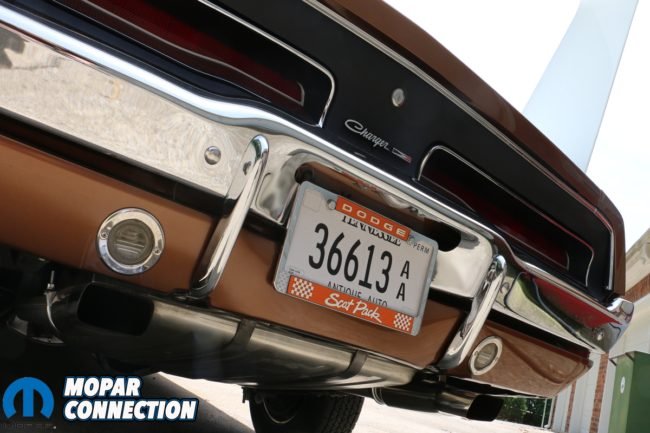
It’s said the second owner was not mechanically inclined and by 1975, the Daytona was very unreliable and kept breaking down. Being as the soldier had a wife and a small baby, he needed something more reliable so he sold the car to a speed addicted friend of his (another soldier at the same base); in return buying his slower but reliable 1966 Ford Galaxie for $600. This friend would now be the third owner of the Daytona in just five short years.
The third owner would eventually pilot the car to earn its title as the “Nuremberg Daytona”; the first American car to join the Nuremberg “Autobahn 250” club. If you haven’t heard of the club before, it was set-up exclusively for cars and owners who were able to maintain speeds in excess of 250 km/h (156 mph) on a 28-mile stretch of the German Autobahn. Back then, the only cars that held the title of 250 km/h were Ferraris, Maseratis, Lamborghinis, a Porsche 911 Turbo, a BMW CSL; and this particular Dodge Daytona.
“They would go out on the Autobahn, measure off the proper distance, and they would have flags to show when you were coming up to the starting point to make sure they were up to speed,” says Richard. “When they got up to speed they would hold it for an extended period. A guy at the starting line would click a stop watch and radio the guy at the end. Totally illegal, I’m sure. He would have a stop watch at the other end of the course with a radio and when the driver passed by he would click his stop watch.” The Daytona did very well, blowing away the club’s members by laying down a run that averaged 262 kilometers per hour (162.8 mph); on polyglas tires to boot!
“The third owner discovered that the 3:23 gear ratio was OK for the Autobahn but not the best for drag racing. One day during a stop light drag race against a new Porsche 911 Turbo, the Daytona held its own with the Turbo; but couldn’t pass it. A friend of the owner who was riding shotgun at the time was so annoyed that he actually searched out and bought a used 3:91 SureGrip pumpkin and gave it as a gift to his friend. There was one condition, his friend had to promise to take him out and hunt down another 911 Turbo to race. They did; more than once and were never beaten by any 911 Turbo or any other car after that”, says Richard.

During this ownership, the car was again repainted; this time to white. The owner was apparently convinced by a shady local gearhead that the car was originally an automatic and should be returned to that condition. He said he would be more than happy to swap his automatic for the Daytona’s “incorrect” 4-speed and somehow, the owner was pursued to agree. The swap was done and the Daytona stayed an automatic for years. In September 1976, the owner and his family were relocated by Army orders from Germany to the Fort Carson base (oddly enough right next to Colorado Springs where the car originated from) so the Daytona was loaded back up and set sail back to the U.S. Not too long after, the owner decided to sell the car so he placed an ad in the Winged Warriors Club newsletter. The ad said, “DTA- 440 4V AUTO; MTR REBLT; NDA LFT HDLT DR; TRACTION BARS; AIR SHKS; COTM WHEELS; OIL COOLER; MANY EXTRAS; $2,800; COLORADO SPRINGS, COLORADO, 30909; 303-XXX-XXXX: CAR WAS BROUGHT BACK FROM GERMANY.”
The Daytona was purchased for only $1,200 in 1977 by its fourth owner who lived in Southern California. The man and his wife flew into Colorado Springs and drove the car back to California. They enjoyed the car immensely, frequenting many local events with it. In fact, it was one of the first cars registered with the Winged Warriors Car Club. By the early 1980’s, the Daytona was taken into a shop for a much needed repaint. During this time, the original engine and non-original automatic transmission were stolen. It was at this point that the repaint was put on hold, even though the car had already been sanded and primer applied. The car would never even up getting painted. As the years passed by, the Daytona was moved from storage location to storage location and never touched. Around 30 years after it had been taken apart to get repainted, the owner passed away and the car continued to sit hidden away from the public. Everyone but the deceased owner’s immediate family had forgotten about the car and knew nothing of its whereabouts; it had simply vanished off the radar.
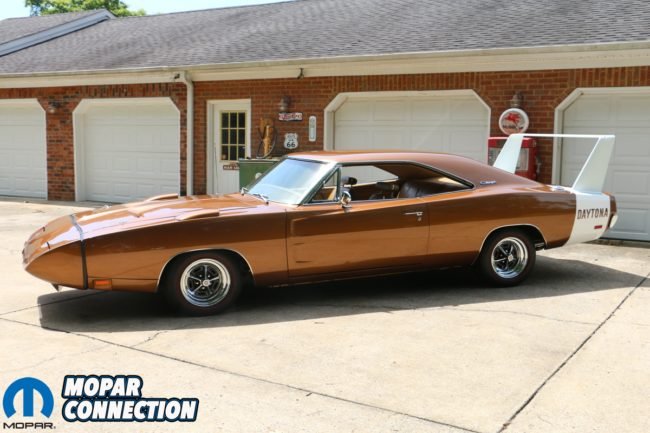
After his passing, the family struggled with what to do with the car; should they sell it? Should they keep it? Was it even a real Daytona? Back in 2013, after a brief internet search, they reached out to Richard (who runs www.LegendaryCollectorCars.com) hoping to verify its authenticity and figure out an approximate value should they decide to sell. The family provided Richard with the VIN number and immediately upon seeing the letters “XX” was able to confirm that it was indeed the real deal. Richard asked for more information and pictures, however because the car was buried in their garage with boxes and other storage items, there was no easy way of getting to the fender tag or checking for a build sheet. After a number of phone conversations with the family, Richard decided it was worth a flight from Nashville to Southern California to inspect the car first hand. When he arrived, the sight was not pretty. The nose cone was removed and sitting on the hood, all four tires were flat and mounted on rusty and weathered wheels, the old traction bars were well beaten and the interior was filthy and dusty. However, the car was solid and appeared to be all there. Armed with research documents, a camera and a flashlight, Richard inspected the car and was thrilled with the rest of what he saw.
The fender tag was there and in fantastic shape and luckily, the original build sheet was still in the car and in good shape as well. Richard learned that the Daytona had had been undercoated at the factory which probably helped it remain relatively rust free over the years. Even though it had no engine or transmission, the family had insisted that it was an automatic car but to Richard’s surprise; the Daytona was indeed a factory 4-speed. Not only did the build sheet and fender tag state that but the car still had its original three pedals! When the shady gearhead had swapped in an automatic way back in Germany, he never bothered to remove the clutch pedal! In addition, the original Hurst 4-speed shifter was found lying on the passenger side floor!
Richard knew he had to have the car; so he quickly asked if it was for sale. The family was very reluctant to let the car go after all those years but based on Richard’s plans for the Daytona, they felt it would be better to sell it to a good home than to continue to let it deteriorate in storage. Thus, Richard and Katrina became the fifth owners of the Daytona. Richard does not want to share the purchase price however he says it was equivalent to the price of a new at-the-time 2014 Dodge Challenger. After agreeing to a deal, Richard returned home to Tennessee and scheduled a return trip back to California to pick up the car within 30 days. Shortly after, he drove the 4,000 mile round trip from Tennessee to Southern California, picked up the Daytona and returned home.
Once the Daytona was home, Richard did an even more thorough inspection and then sat down with Katrina to figure out a game plan for the restoration. “There were only two real choices as we saw it. The first was to do a 100-point correct restoration of the car. This would take it back to the condition it was in when it left the factory and Creative Industries; done as correctly as possible. Such a restoration would maximize the value of the car and would also mean that for the foreseeable future, it would be trailered to all events. It would be a strict show car and seldom driven. The second choice was to do an authentic restoration to the highest quality reasonable for a car that would be driven. That means the restoration would be accurate but done understanding the car’s primary use would be to be driven and enjoyed with a second priority being its ultimate value and show winning capabilities“, says Richard.
After serious consideration, the couple agreed that the car was originally built to be driven. Since it had a long history of being street raced and was missing its original drivetrain, they decided to choose the second option; restore it to look as it did when it left Creative Industries but keep the main focus on making the car a great driver. The Daytona would not be over-restored to a 100-point show car and in addition, certain items would be changed to make the car more suitable for today’s roads. Once that was decided, the Daytona was sent to Rod & Custom Machine in Dickson, TN to perform the restoration.
The crew there began with the removal of the front and rear suspension components. The car was then placed on dollies and the body and interior were stripped down to the shell as well. The shell was stripped down to the metal, uncovering a few surprises. Although they had originally believed the body was rust free, they found some spots that needed attention. There were several pin holes on the top of both fenders as well as some spots on the bottom. Although nothing was through the metal, everything that had a hint of rust was cut out and replaced with new metal. Richard says all of the metal cut out of the entire car would fit on a large dinner plate.
The crew also discovered some damage to the rear tail panel. Story goes that the damage had occurred during a stop light rear-ender in Germany. The driver explained that he was so taken by the strange American car in front of him that he forgot to stop! The Daytona received minor damage but the German car sustained substantial front end damage. When it was repaired there, they opted to slather on a thick layer of body filler instead of properly fixing it. The crew removed all of the German filler, pulled the panel straight and then applied a very thin layer just to smooth it out. Other than that, the only other damage that needed to be fixed was a small dent in the driver side rear quarter panel. The underside is all original and still even retains its original undercoat!
With the body work complete, the crew moved to the nose cone. When they stripped the cone down to the metal, they didn’t like what they found. The nose cone had received extensive and repeated damage over the years. The headlight doors were unusable and much of the nose cone needed major work. Helmut Aulgur, the third owner in Germany told Richard the main damage to the nose was from the original owner hitting an oak tree! When it was repaired, the body man literally sculpted the nose out of filler; some was nearly 3/8 of an inch thick! It was determined that the original Daytona nose was too far gone so it would be put on a shelf and not used. Since finding an OEM steel nose is next to impossible and the cost (if you could find one) would blow the budget out of the water, a fiberglass nose was ordered up from a well-known source.
Once the fiberglass nose showed up, the crew realized it didn’t fit up to their expectations so it was decided that a brand new metal one would be built from scratch using measurements from both the original and fiberglass cones. The new nose is hand-built completely out of steel and carefully fitted to the car. It appears as close to original as possible and is built better and fits better than factory. Once everything on the body was smoothed out and lined up, the Daytona was shot in a fresh coat of its original T7 Dark Bronze Metallic.
Once the body and paint were completed, a brand new Legendary interior from Classic Industries was installed. Evans Wiring supplied the wiring and many of the smaller items were sourced from Classic Industries and PG Classics. Ward’s Classic Car Radio Repair rebuilt the factory radio and S&M Electro-Tech, Inc. supplied the dash speaker. Under the hood, a date code correct 440 was installed. Backing the engine is a date code correct 4-speed manual transmission and Dana 60 sourced from Tony’s Mopar Parts; both freshly rebuilt. To help the Daytona stop better, a factory power disc brake setup was installed on the front. Richard tells us all of the factory drum brake components are put away so the car can be returned to original if that is ever desired. Since the original tires and wheels were missing, Richard opted for 15” Magnum 500s wrapped in redline BF Goodrich radial tires to improve ride quality. Other parts were sourced from Glen-Ray Radiators, National Moparts, Performance Car Graphics, Mr. Moparts, David Koops and Herb’s Parts.





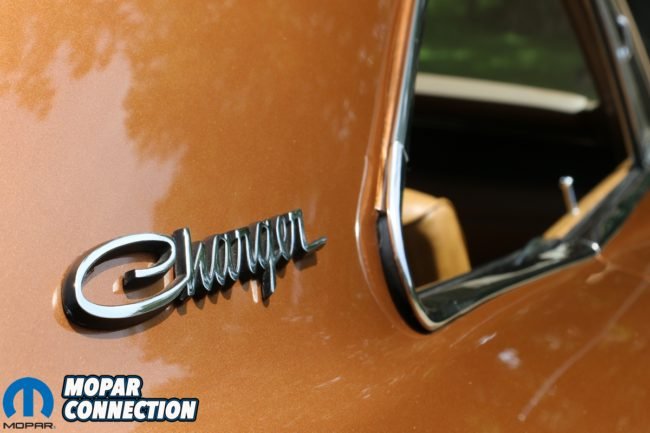
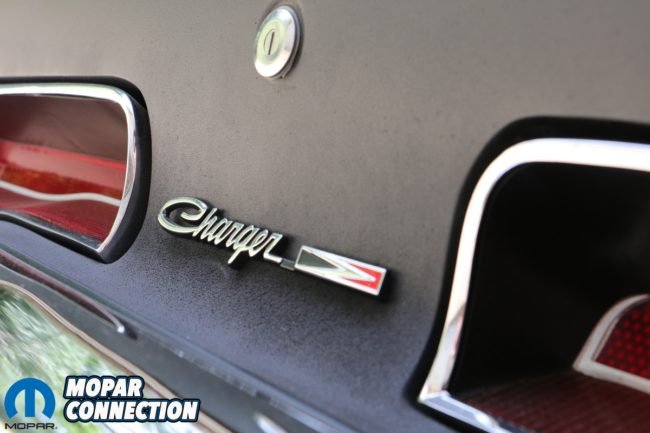


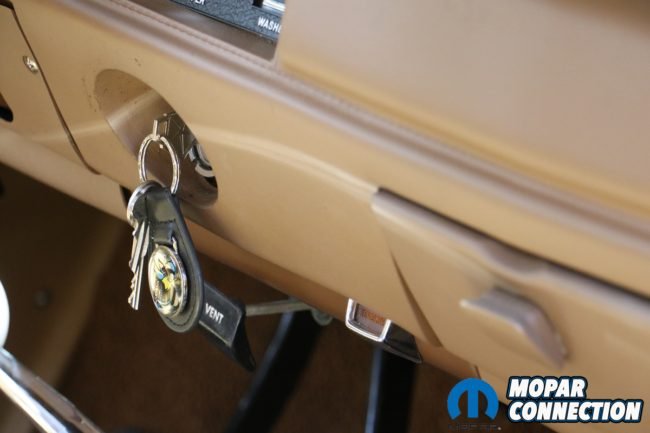
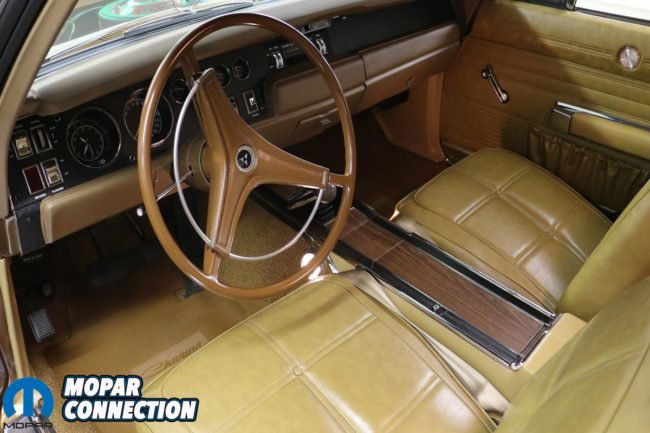
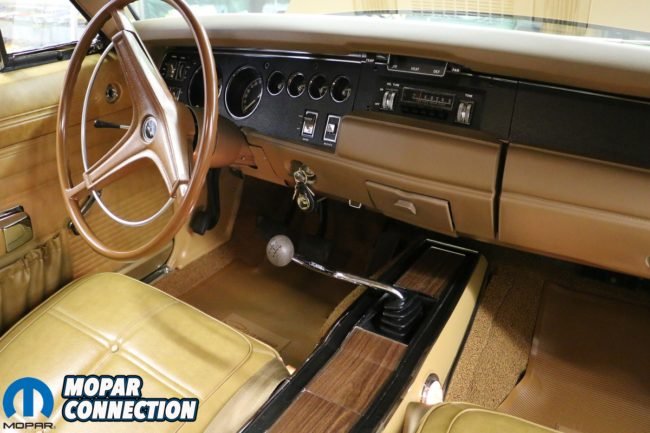
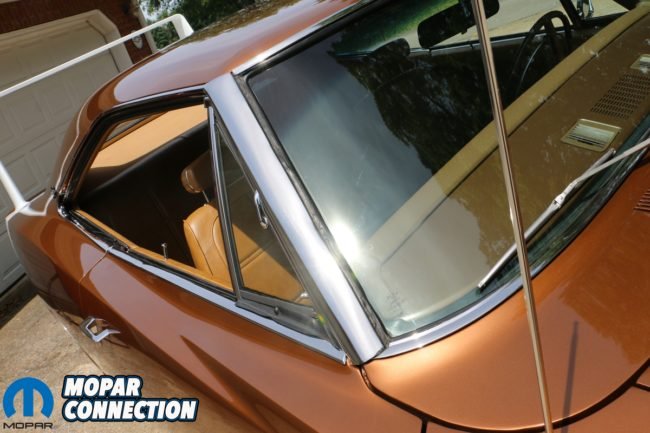

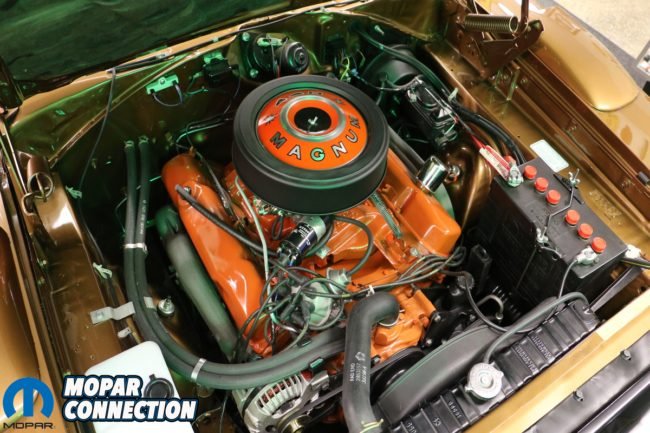

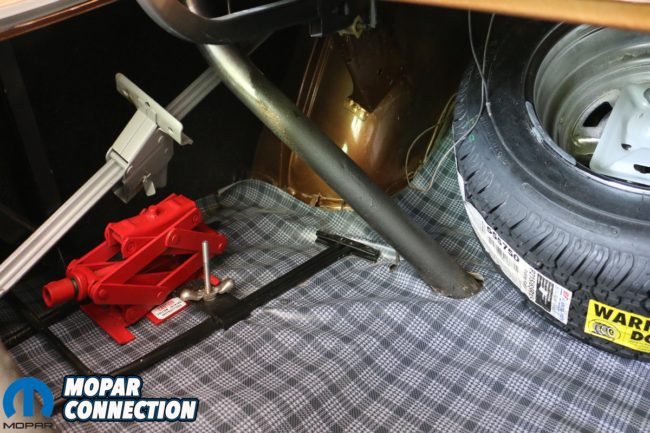


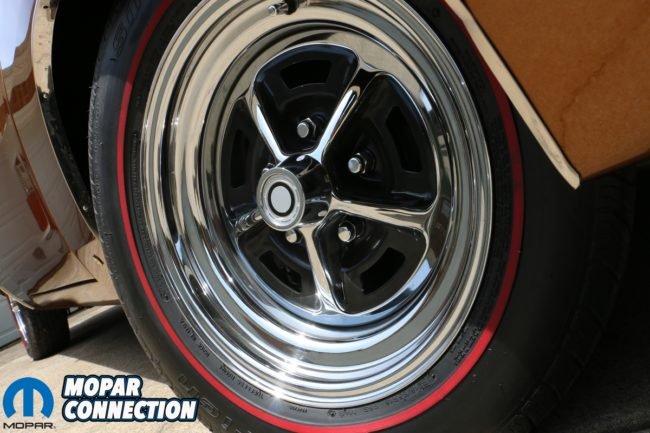


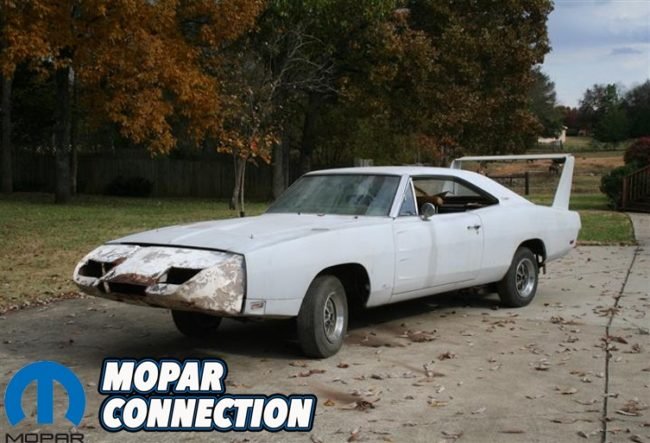

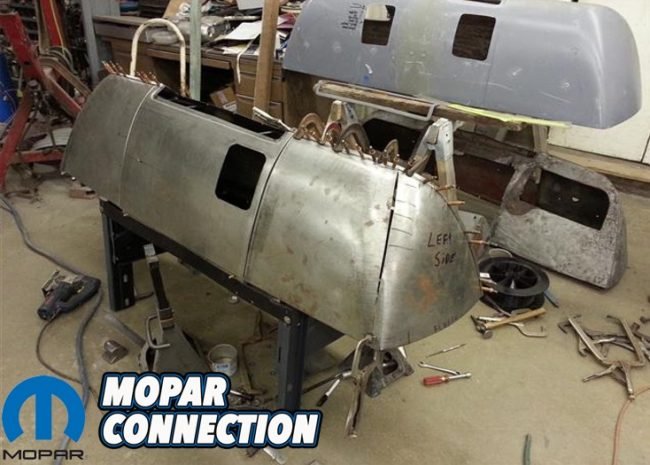

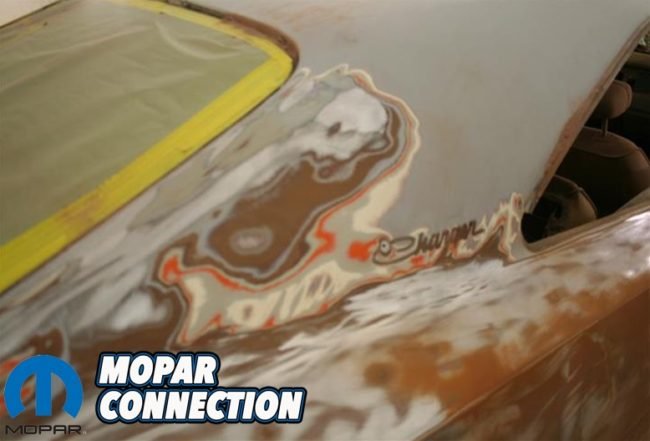


































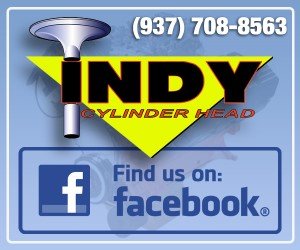


I love Mopar vehicles. I’ve owned a 1988 Dakota, 1996 Ram P/U truck, 2006 Dodge Charger R/T and lastly a 2007 Dodge Nitro.